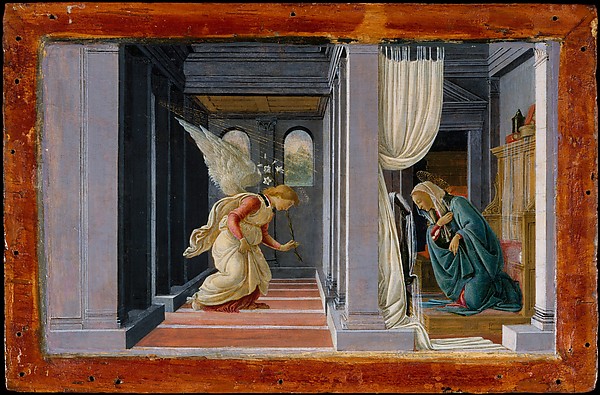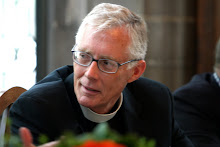Earlier
this year, the comedian Chris Rock received a lot of press for his Saturday Night Live remarks on the
commercialization of Christmas. Here is part of what he said:
It's America, we commercialize
everything. Look what we did to Christmas. Christmas is Jesus's birthday! Now I
don't know Jesus, but from what I've read, Jesus is the least materialistic
person to ever roam the earth. Jesus kept a low profile and we turned his birthday
to the most materialistic day of the year. [SNL
11/1/14]
I
don’t think there’s much to disagree with here, except to note that even in its
beginnings in the late days of the Roman Empire, Christmas had as much to do
with celebrating the prevailing culture as it did the birth of Jesus. When Christianity became the state religion
of Rome in the fourth century, one of the first things the imperial church did
was to transform Saturnalia, the pagan Roman winter solstice festival, into
Christmas, the celebration of Jesus’s birth. So to be fair, even those of us
who want to “Keep Christ in Christmas” must admit we’re rowing up a very
determined historical stream.
Still,
some of the wretched excess of the season is hard to defend. Beyond the ritzy gifts, we all get too many
of those seasonal letters detailing the tribulations of affluence. (You know—“Thank
God Chip was back at Andover when our yacht sank.”) There is a wonderful New York Times blog post this weekend
[“Big City” 12/26/14] called “The Season of the Wealfie” in which Gina
Bellafante describes a new holiday trend.
According to Bellafante, a Manhattan advertising executive “recently coined the term [Wealfie] to refer to, as he put it in a
column for The New York Observer last
month, ‘selfies taken in a luxury context that confirm one has money, status
and social currency.’” She goes on to explain:
The paradigmatic wealfie is the image you take of yourself
getting on or off a private jet, possibly on your way to New Year’s Eve in
Morocco or Anguilla. . . . But to the extent that people so closely identify
with the things that they buy and receive, the picture shot of the Hermès or
Chanel or Prada gift “unboxed” and then posted on Instagram is another kind of
wealfie. Of course, there are so many ways to broadcast status these days.
You bet. The trend in early
admissions to elite colleges makes Christmas a great time for parents to brag.
More from Bellafante’s piece:
Two weeks ago, a shipping executive posted a picture on
Facebook of two mugs on a counter with a Christmas tree in the distance. One
mug said, “Amherst Mom,” the other, “Amherst Dad.” The status update read, “An
early Christmas gift from our son upon his acceptance to Amherst College, class
of ’19.” This is actually a wealfie that can perform double duty, given that it
makes known not only that your child got in, but also that you seem undeterred
by the list price of, in the case of Amherst, $60, 400 in tuition, fees, room
and board.
Whether we call it
the season of commercialism or wealfies, modern Christmas still can’t seem to
shake the Roman Empire’s and Christendom’s association of the season with
power. Consciously or not, we continue
to use Christmas, as our forbears did, to project an image of God as powerful,
victorious, and bold—very like a Roman emperor or medieval king. But when we
actually read the New Testament, it doesn’t talk about the birth of Jesus in
terms of power at all. Listen again to
these words from Paul’s letter to the Galatians:
But when the fullness of time had come,
God sent his Son, born of a woman, born under the law, in order to redeem those
who were under the law, so that we might receive adoption as children. And
because you are children, God has sent the Spirit of his Son into our hearts,
crying, "Abba! Father!" So you are no longer a slave but a child, and
if a child then also an heir, through God. [Galatians 4:4-7]
What
Paul is saying has little in common with our ancient or modern triumphal
celebrations of Christmas. God is born
to us in Jesus so that all of us might receive adoption as God’s children. Christmas is not about God defeating enemies
or proving who’s boss. Christmas is
about God’s unfolding strategy of gathering and reconciling the whole world in
one embrace of love. After the birth of
Jesus, we are no longer God’s slaves. We
are now God’s children. Slavery is a
relationship based on power.
Child-parent status is one based on love. Christmas changes everything.
It has always
struck me as significant that Christmas celebrates God coming among us as a
child, the weakest and least powerful expression of human life. Yet we continue
to use the season to talk about God’s power and might. But there are other, pre-imperial, more
authentic ways to understand what Jesus’s birth can mean for us today. This
year Kathy and I received a Christmas card from our longtime friends Harvey and
Doris Guthrie—Harvey is a retired Old Testament scholar, seminary dean, and
parish priest who preached here last May—and this card was if anything the
opposite of the wealfie. In it they
quoted this verse from a hymn, “The Nativity of Our Lord and Saviour Jesus
Christ” by the 18th century English poet Christopher Smart:
O the magnitude of meekness!
Worth from worth immortal sprung;
O the strength of infant weakness,
If eternal is so young!
It’s clear from
these words that Christopher Smart understands something about Christmas that
many of our more familiar hymn writers don’t quite get. Christmas is not a demonstration of divine
power. It is exactly the reverse. It is a demonstration of divine
weakness.
By coming when and
where he did and as whom he did, God shows us something about how things finally
are. We human beings are easily misled
and confused. Glittery things distract
us from what is really valuable. In the
end it is not about power. It is about
love. We often mistake the one for the
other. But real love--divine love,
Jesus’s love—is not about power at all.
God knows us as we are—complicated, willful, distracted creatures—and
yet God still chooses to be one of us in our most vulnerable state.
For reasons that I
will never fully understand, we human beings are ashamed of weakness. We think that strength is normative, and that
any deviation from strength is a sign of divine disfavor. But it’s not that way at all. We humans are by nature finite, limited,
fragile creatures. As infants we are
totally dependent on our parents. As
adults we continue to need each other if we are to flourish and survive. That is the way life is. That is the way we are. We don’t like it much, and so we define our
frailty as our problem, and we buy into all kinds of bad ideas—political,
social, even religious—that promise us a way to escape and transcend our
weakness.
Christmas is a
time to give up all our pretensions. None of them matter. Our strength is always temporary at best, and
it will never save us. Only our solidarity with each other in our weakness will
bring about the peace and reconciliation we all seek. God comes among us in
Jesus as one of us. As Harvey and Doris say in their card, this season
celebrates the coming of One “in whose infant weakness is the strength this old
world needs”.
I hope that this
week between Christmas and New Year’s Day will afford you the time to take in
the deepest truths of the season.
Christmas asks that we see ourselves in this Bethlehem infant, weak and
vulnerable yet precious and loved. That’s how it is with Jesus; that’s how it
is with us. The coming of God among us
in fragile human weakness is the greatest present we receive at Christmas, and this
divine gift opens up to us the possibility of accepting ourselves and each
other as we really are.
There is so much
to be thankful for this season. Who
needs a wealfie when we have the real thing? God has become one of us in Jesus.
His infant weakness is in fact the strength this old world needs. Human and
divine are closer than we think. The One
at the center of the universe is one of us and with us in our struggles and
joys, our hopes and our fears. God now
knows what it is to be us, and that knowledge changes everything. In the words of Christopher Smart, the hymn-writing
poet who got it right:
God all-bounteous, all-creative,
Whom no ills from good dissuade,
Is incarnate, and a native
Of the very world He made. Amen.



